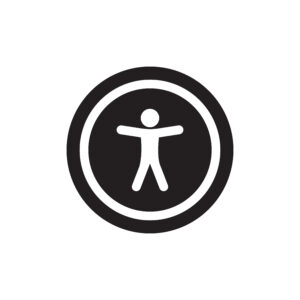
As you return to the classroom this new school year, it’s a great time to think about how technology can not only make your instruction more engaging and dynamic, but how it can make learning more accessible for the students that you serve who have disabilities. Being an accessibility “a11y” (the shorthand, “cool” way to abbreviate “accessibility” also aligned with ISTE standard 2.2b, being an advocate for equitable access) can be a positive impact both on student outcomes, but also teacher productivity and efficiency.
It is common in classrooms today for there to be two types of technology present that can support students with disabilities. The first is embedded in the laptops, chromebooks, and tablet devices used by all students. The operating systems of each of these devices have accessibility settings that can make content displayed on them more accessible to students with disabilities through features such as visual magnification, hearing aid integration, touch/typing accommodations, text-to-speech/speech-to-text, and more! No additional software download required. In fact, accessibility features have become so common in educational technology, that both the 2024 National Educational Technology Plan (see below), as well as Virginia’s 2024-2029 Educational Technology Plan (also see below), explicitly incorporate the use of these features into the expectations for how schools will use instructional technology to support students with disabilities.
The second type of technology present in many classrooms for supporting students with disabilities is assistive technology (commonly referred to as “AT”). Assistive technologies can range from simple light-tech devices to high-tech computer programs, alternative communication devices, and physical supports. The Individuals with Disabilities Education Act (IDEA) defines assistive technology as “is any item, piece of equipment, software program, or product system that is used to increase, maintain, or improve the functional capabilities of persons with disabilities”. Meaning, what makes something assistive technology is less about “what it is” and is more about “what it does”. Assistive technology also differs from instructional technology in that a student’s IEP team has specifically identified this tool as a support them in an area impacted by their disability. Teachers learning to adapt there instruction in ways that can incorporate a student’s use of assistive technology aligns nicely with ISTE’s standard 2.5a as well, focusing on accommodation learner differences. The U.S. Department of Education’s Office of Special Education Programs has recently released new guidance around the provision of assistive technology in schools (linked below) that can be supportive of new and experienced teacher providing AT support.
For support in considering, assessing for, and/or trialing assistive technology with your students or incorporating accessible instructional technology into your classrooms, please contact your regional Training and Technical Assistance Center (TTAC) or visit atnetwork.ttaconline.org. We’d also invite you to save the date for Virginia’s assistive and accessible educational technology conference “TechKnowledgy” coming to James Madison University in Harrisonburg, Virginia for November 18-20, 2024.
Explore
Title: Virginia’s Assistive Technology Network Website and Resources
Check out the Virtual AT Lab and the “How Do I?” pages to find quick ways to explore AT.
This course will guide you through the steps to completing the Virginia Assistive Technology, Tools, and Strategies Consideration Guide. Upon successful completion, a certificate worth 1 hour of professional learning will be awarded.
Read
Title: National Ed Tech Plan
Title: Virginia Ed Tech Plan 2024-29
Title: OSEP AT Guidance
Title: AT Tools in Schools Booklet
Listen
Title: Accessible Learning Experience Podcast (From CAST)
Title: Think Inclusive Podcast
Title: Inclusion Stories
Watch
Title: Sharon Jones from the Virginia AT Network Introduces the new OSEP AT Guidance
Title: Quick Live Captioning
Live captioning is not just for students with hearing impairments! Enhance reading comprehension and support literacy development with multisensory learning for hearing and seeing the words paired together.
Library Recommendation
*Check out your TTAC Lending Library for these!
Title: Inclusive Learning 365
Title: The New Assistive Tech, Making Learning Awesome for All!




